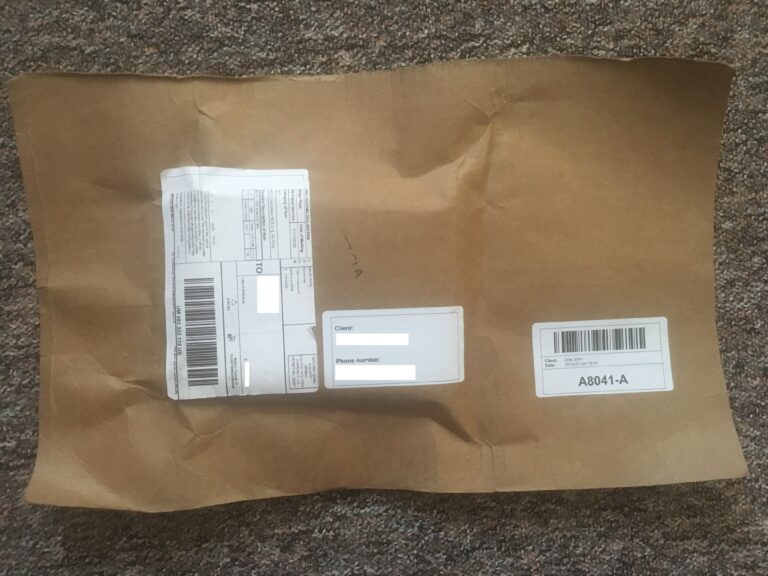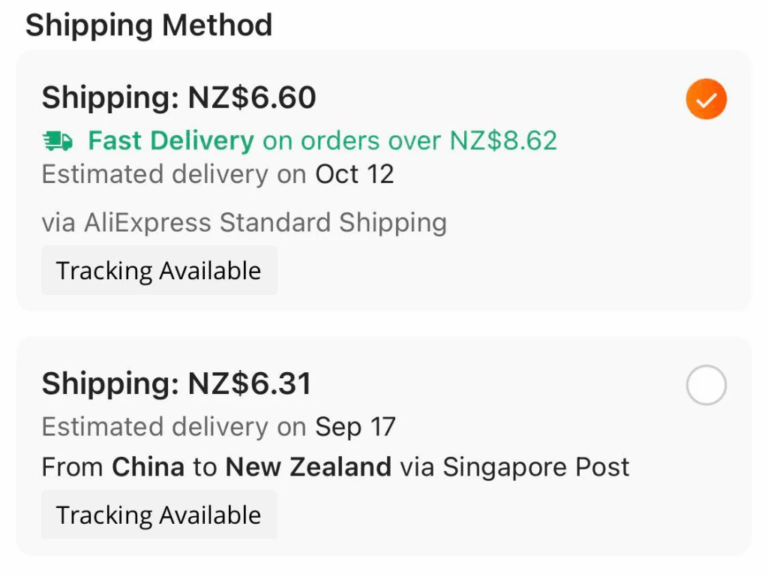Ultimate Guide to Shipping to Spain: Costs, Methods, and Key Considerations (2025)
Shipping to Spain is a critical consideration for businesses and individuals engaged in global trade, e-commerce, and personal logistics. As a major European hub with a robust economy and a thriving e-commerce market valued at €72.2 billion in 2025 (projected to grow at 7.1% annually through 2028), Spain attracts shipments from key exporting countries like China, the United States, Germany, and Japan.
Whether you’re an online retailer shipping small parcels, a manufacturer sending bulk cargo, or an individual mailing personal items, understanding the costs, delivery methods, and potential challenges is essential for efficient and cost-effective logistics. This comprehensive guide explores shipping options to Spain, including sea freight (container and bulk), air freight (bulk and express), and small parcel services, with detailed pricing, transit times, service providers, and tips to optimize your shipping process. Tailored for users searching “shipping to Spain,” this article addresses costs, reliable providers, and key considerations to ensure a seamless experience.
Understanding User Intent for “Shipping to Spain”
Users searching for “shipping to Spain” are typically seeking:
- Cost estimates for various shipping methods (sea, air, express).
- Reliable service providers for small parcels, containers, or bulk cargo.
- Transit times to plan logistics effectively.
- Customs and regulatory requirements to avoid delays or penalties.
- Practical tips to reduce costs and ensure timely delivery.
This guide provides in-depth insights into these areas, focusing on shipping from major exporters like China (using Cainiao Global’s small parcel data), the U.S., Germany, and Japan. We’ll also address considerations for Spain’s customs processes, EU regulations, and logistical nuances, ensuring you have all the information needed to ship effectively.
Shipping Methods to Spain
Shipping to Spain can be categorized into three primary methods: sea freight, air freight, and express courier services. Each method suits different needs based on shipment size, urgency, and budget. Below, we break down these options, with a special focus on Cainiao Global’s small parcel services for 1kg packages from China.
1. Sea Freight: Container and Bulk Cargo
Sea freight is the most cost-effective option for large shipments, such as commercial goods, machinery, or bulk cargo. It is divided into Full Container Load (FCL), Less than Container Load (LCL), and breakbulk/RoRo for oversized or specialized cargo.
Full Container Load (FCL)
FCL involves reserving an entire 20-foot or 40-foot container for your goods, ideal for businesses shipping large volumes, such as furniture, electronics, or industrial equipment.
- Costs:
- From China (e.g., Shanghai to Barcelona or Valencia): $1,800–$2,800 USD for a 20-foot container; $2,500–$3,800 USD for a 40-foot container, depending on the season and carrier.
- From the U.S. (e.g., Miami or New York to Barcelona): $2,500–$4,000 USD for a 20-foot container; $3,500–$5,500 USD for a 40-foot container, reflecting higher transatlantic costs.
- From Germany (e.g., Hamburg to Valencia): $1,200–$2,000 USD for a 20-foot container; $1,800–$2,800 USD for a 40-foot container, benefiting from intra-EU logistics.
- From Japan (e.g., Yokohama to Barcelona): $2,000–$3,200 USD for a 20-foot container; $3,000–$4,500 USD for a 40-foot container.
- Transit Times:
- China: 30–45 days port-to-port (e.g., Shanghai to Barcelona).
- U.S.: 14–21 days (e.g., Miami to Barcelona).
- Germany: 5–10 days (e.g., Hamburg to Valencia, leveraging EU proximity).
- Japan: 35–50 days (e.g., Yokohama to Barcelona).
- Considerations:
- FCL is best for shipments filling at least half a container to maximize cost efficiency.
- Additional costs include port fees, fuel surcharges, and inland transport (e.g., trucking to/from ports).
- EU customs clearance is required for non-EU shipments (China, U.S., Japan), necessitating a commercial invoice, packing list, and EORI number for importers.
Less than Container Load (LCL)
LCL is ideal for smaller shipments that don’t require a full container. Your cargo is consolidated with others, and you pay for the space used, measured in cubic meters or weight.
- Costs:
- From China: For a 1kg parcel, Cainiao Global charges 74 CNY (~$10 USD) with a 9–12 day transit time via sea (LCL or integrated logistics). For larger LCL shipments (e.g., 1 cubic meter), expect $80–$120 USD.
- From the U.S.: $100–$150 USD per cubic meter, depending on the port (e.g., Miami to Barcelona).
- From Germany: $50–$80 USD per cubic meter, benefiting from EU single market efficiencies.
- From Japan: $90–$140 USD per cubic meter.
- Transit Times:
- China: 30–45 days, similar to FCL, due to consolidation processes.
- U.S.: 14–25 days.
- Germany: 5–12 days.
- Japan: 35–50 days.
- Considerations:
- LCL is cost-effective for small businesses or individuals shipping smaller quantities (e.g., 50–500 kg).
- Longer transit times due to consolidation and deconsolidation at ports.
- Accurate cargo measurements are crucial to avoid charges based on dimensional weight (length x width x height / 1000 for sea freight).
Breakbulk and RoRo (Roll-on/Roll-off)
Breakbulk and RoRo are used for oversized or heavy cargo, such as vehicles, machinery, or large industrial components. RoRo involves driving vehicles onto a vessel, while breakbulk handles non-containerized cargo loaded individually.
- Costs:
- From China: RoRo for a standard car costs ~$1,000–$1,500 USD (Shanghai to Barcelona); breakbulk costs vary by cargo size, averaging $100–$200 USD per metric ton.
- From the U.S.: RoRo costs ~$1,200–$1,800 USD for a vehicle (Miami to Barcelona).
- From Germany: RoRo within the EU is cheaper, ~$800–$1,200 USD per vehicle.
- From Japan: RoRo costs ~$1,200–$1,800 USD; breakbulk is $120–$220 USD per metric ton.
- Transit Times:
- Similar to FCL/LCL: 30–45 days from China, 14–21 days from the U.S., 5–10 days from Germany, and 35–50 days from Japan.
- Considerations:
- RoRo is ideal for vehicles or wheeled cargo; breakbulk suits oversized items like machinery.
- Marine insurance (typically 1–2% of cargo value with a $500 USD deductible) is recommended for high-value shipments.
- Specialized handling may incur additional fees at Spanish ports like Barcelona or Valencia.
2. Air Freight: Bulk and Small Parcels
Air freight is faster but more expensive, suitable for time-sensitive, high-value, or lightweight goods like electronics, fashion, or small parcels. It includes bulk air freight and express courier services.
Bulk Air Freight
Bulk air freight is used for shipments exceeding express courier weight limits (e.g., >4 lbs), such as commercial goods or inventory restocking.
- Costs:
- From China: $5–$10 USD per kg, based on actual or volumetric weight (length x width x height / 6000). For a 100kg shipment, expect $500–$1,000 USD.
- From the U.S.: $3–$7 USD per kg, with lower rates for domestic-like routes (e.g., Miami to Madrid).
- From Germany: $2–$5 USD per kg within the EU.
- From Japan: $6–$12 USD per kg.
- Transit Times:
- China: 3–7 days to Madrid-Barajas or Barcelona-El Prat airports.
- U.S.: 1–3 days (e.g., Miami to Madrid).
- Germany: 1–2 days (e.g., Frankfurt to Madrid).
- Japan: 4–8 days.
- Considerations:
- Ideal for high-value goods (e.g., electronics, medical supplies) or urgent shipments.
- Volumetric weight can significantly increase costs for bulky items.
- Requires customs documentation, including a commercial invoice and airway bill.
Small Parcel Express Services (Cainiao Global and Others)
Express courier services are the go-to option for small parcels (e.g., 1kg or less), widely used by e-commerce sellers and individuals. Cainiao Global, a leading provider under Alibaba, offers competitive rates for small parcels from China.
- Costs:
- From China: Cainiao Global charges 74 CNY (~$10 USD) for a 1kg parcel to Spain, with a 9–12 day delivery time (standard service). Competitors like DHL, FedEx, or UPS charge $20–$50 USD for similar parcels with faster 3–5 day delivery.
- From the U.S.: Express rates range from $15–$40 USD for a 1kg parcel (e.g., USPS Priority Mail International or FedEx International Economy).
- From Germany: $10–$25 USD for a 1kg parcel, benefiting from EU proximity.
- From Japan: $15–$45 USD, depending on the courier (e.g., Japan Post EMS or DHL).
- Transit Times:
- China: 9–12 days (Cainiao Global standard); 3–5 days (DHL/FedEx express).
- U.S.: 5–10 days (USPS); 2–4 days (DHL/FedEx).
- Germany: 2–5 days.
- Japan: 5–10 days.
- Considerations:
- Cainiao Global is cost-effective for budget-conscious e-commerce sellers but slower than premium couriers.
- Tracking is available for most express services, ensuring transparency.
- Small parcels may incur EU Value Added Tax (VAT) or customs duties if valued over €150.
3. Comparison of Shipping Methods
| Method | Best For | Cost Range (1kg) | Transit Time | Key Providers |
|---|---|---|---|---|
| Sea Freight (FCL) | Large commercial shipments | $1,200–$5,500 (container) | 5–50 days | Maersk, MSC, COSCO |
| Sea Freight (LCL) | Smaller commercial shipments | $10–$150 (1kg or 1m³) | 5–50 days | Cainiao Global, Kuehne+Nagel |
| Breakbulk/RoRo | Vehicles, oversized cargo | $800–$1,800 (vehicle) | 5–50 days | Höegh Autoliners, Wallenius Wilhelmsen |
| Air Freight (Bulk) | High-value, time-sensitive goods | $2–$12 per kg | 1–8 days | Lufthansa Cargo, Cathay Pacific Cargo |
| Express (Small Parcel) | E-commerce, personal packages | $10–$50 (1kg) | 2–12 days | Cainiao Global, DHL, FedEx, UPS |
Shipping Costs to Spain from Major Exporting Countries
Below is a detailed breakdown of shipping costs and transit times for 1kg parcels and larger shipments from key exporters to Spain, based on Cainiao Global’s data and industry-standard rates.
From China
- Small Parcel (Cainiao Global): 74 CNY (~$10 USD), 9–12 days.
- Sea Freight (FCL): $1,800–$3,800 USD (20ft/40ft container), 30–45 days.
- Sea Freight (LCL): $80–$120 USD per cubic meter, 30–45 days.
- Air Freight (Bulk): $5–$10 USD per kg, 3–7 days.
- Express Courier: $20–$50 USD (DHL/FedEx), 3–5 days.
From the United States
- Small Parcel: $15–$40 USD (USPS, FedEx), 5–10 days.
- Sea Freight (FCL): $2,500–$5,500 USD (20ft/40ft container), 14–21 days.
- Sea Freight (LCL): $100–$150 USD per cubic meter, 14–25 days.
- Air Freight (Bulk): $3–$7 USD per kg, 1–3 days.
- Express Courier: $15–$40 USD, 2–4 days.
From Germany
- Small Parcel: $10–$25 USD, 2–5 days.
- Sea Freight (FCL): $1,200–$2,800 USD (20ft/40ft container), 5–10 days.
- Sea Freight (LCL): $50–$80 USD per cubic meter, 5–12 days.
- Air Freight (Bulk): $2–$5 USD per kg, 1–2 days.
- Express Courier: $10–$25 USD, 2–5 days.
From Japan
- Small Parcel: $15–$45 USD, 5–10 days.
- Sea Freight (FCL): $2,000–$4,500 USD (20ft/40ft container), 35–50 days.
- Sea Freight (LCL): $90–$140 USD per cubic meter, 35–50 days.
- Air Freight (Bulk): $6–$12 USD per kg, 4–8 days.
- Express Courier: $15–$45 USD, 5–10 days.
Key Service Providers for Shipping to Spain
Choosing the right logistics provider is critical for cost, reliability, and tracking. Below are recommended providers for each shipping method:
- Sea Freight:
- Maersk: Global leader for FCL and LCL, with regular routes to Barcelona and Valencia.
- MSC (Mediterranean Shipping Company): Offers competitive rates for container shipping from China and the U.S.
- COSCO: Strong presence in Asia-Europe routes, ideal for shipments from China and Japan.
- Air Freight:
- Lufthansa Cargo: Reliable for intra-EU and transatlantic shipments from Germany and the U.S.
- Cathay Pacific Cargo: Efficient for China-to-Spain air freight.
- American Airlines Cargo: Cost-effective for U.S.-to-Spain bulk air shipments.
- Express Courier (Small Parcels):
- Cainiao Global: Budget-friendly for 1kg parcels from China (74 CNY, 9–12 days).
- DHL Express: Fast and reliable for premium express shipping worldwide.
- FedEx International: Strong for U.S.-to-Spain shipments with robust tracking.
- UPS: Offers consistent service for small parcels and bulk air freight.
- Spain Post (Correos): Local partner for last-mile delivery in Spain, often used by international couriers.
Key Considerations for Shipping to Spain
To ensure a smooth shipping experience, consider the following factors:
1. Customs and EU Regulations
- Non-EU Shipments (China, U.S., Japan):
- Goods valued over €150 are subject to EU VAT (21% in Spain) and potential customs duties (0–17%, depending on the product category).
- An EORI number is required for commercial importers.
- Provide a detailed commercial invoice, packing list, and certificate of origin to avoid delays.
- Intra-EU Shipments (e.g., Germany):
- No customs duties within the EU, but VAT may apply if the seller is not VAT-registered.
- Simplified documentation (e.g., proforma invoice) is sufficient for most shipments.
2. Dimensional Weight and Packaging
- For air freight and express couriers, calculate volumetric weight (length x width x height / 6000 for air; /1000 for sea) to avoid unexpected charges.
- Use lightweight, durable packaging to minimize weight while protecting goods.
- For sea freight, ensure cargo is palletized or crated to withstand long transit times.
3. Spanish Ports and Airports
- Major Ports: Barcelona, Valencia, and Algeciras are the primary entry points for sea freight. Bilbao and Málaga handle smaller volumes.
- Major Airports: Madrid-Barajas and Barcelona-El Prat are key hubs for air freight and express parcels.
- Choose the closest port/airport to your recipient’s location to reduce inland transport costs.
4. Seasonal and Logistical Factors
- Peak seasons (e.g., Q4 for holiday shopping) may increase costs and extend transit times.
- Spain’s island destinations (e.g., Canary Islands, Balearic Islands) may incur additional fees and longer delivery times.
- Check for local holidays (e.g., Christmas, Semana Santa) that may affect customs or delivery schedules.
5. Tracking and Insurance
- Most providers (Cainiao Global, DHL, Maersk) offer tracking for transparency.
- Purchase shipping insurance for high-value goods (1–2% of declared value) to cover loss or damage.
Tips for Cost-Effective Shipping to Spain
- Compare Providers: Use freight forwarders like Kuehne+Nagel or online platforms like Freightos to compare rates across sea, air, and express options.
- Optimize Shipment Size: For small parcels, stay under 1kg to leverage Cainiao Global’s low rates (e.g., 74 CNY from China). For sea freight, consolidate shipments to fill a container or share LCL space.
- Plan Ahead: Allow buffer time for customs clearance, especially for non-EU shipments.
- Use Local Partners: Partner with Spanish logistics providers like Correos for last-mile delivery to reduce costs.
- Leverage E-commerce Platforms: If selling online, integrate with platforms like Alibaba or Amazon, which offer discounted Cainiao Global rates for small parcels.
Conclusion
Shipping to Spain from major exporting countries like China, the U.S., Germany, and Japan offers a range of options to suit different needs. For small parcels, Cainiao Global’s 74 CNY (~$10 USD) rate for 1kg from China with a 9–12 day delivery is a budget-friendly choice for e-commerce sellers. Sea freight (FCL/LCL) is ideal for bulk shipments, with costs ranging from $1,200–$5,500 USD per container, while air freight and express couriers provide faster delivery (1–10 days) for time-sensitive goods. By understanding costs, transit times, customs requirements, and provider options, you can optimize your shipping strategy to Spain. For real-time quotes or specific inquiries, contact providers like Cainiao Global, Maersk, or DHL, or use freight comparison platforms to find the best rates.
If you need further assistance with shipping calculations, customs documentation, or creating an Excel table for specific routes, feel free to ask!




